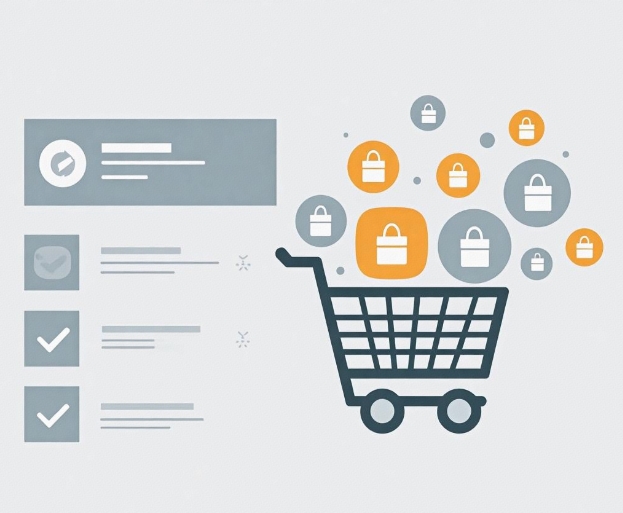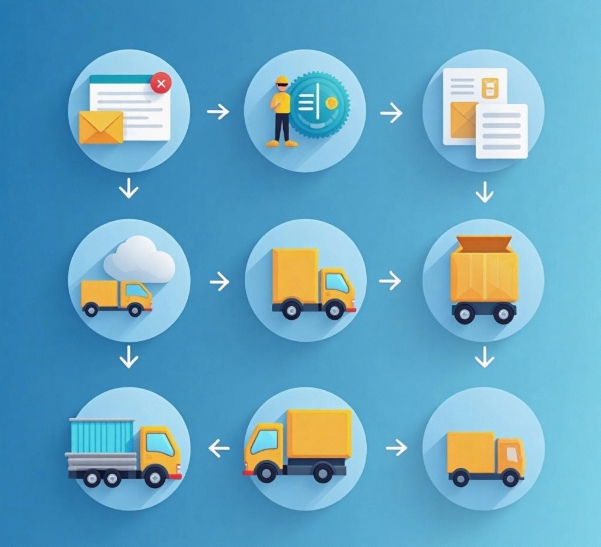Integration of Payment Interfaces and E-commerce Functions in Mini-Program Development
- latest articles
- 1.DApp Development & Customization: Merging Diverse Market Needs with User Experience 2.Analysis of the Core Technical System in DApp Project Development 3.How to achieve cross-chain interoperability in Web3 projects? 4.How does the tokenization of points reconstruct the e-commerce ecosystem? 5.How to Set and Track Data Metrics for a Points Mall? 6.What is DApp Development? Core Concepts and Technical Analysis 7.Inventory of commonly used Web3 development tools and usage tips 8.Development of a Distribution System Integrated with Social E-commerce 9.Six Key Steps for Businesses to Build a Points Mall System 10.What is DApp Development? A Comprehensive Guide from Concept to Implementation
- Popular Articles
- 1.Future Trends and Technology Predictions for APP Development in 2025 2.Analysis of the DeFi Ecosystem: How Developers Can Participate in Decentralized Finance Innovation 3.From Zero to One: How PI Mall Revolutionizes the Traditional E-commerce Model 4.DAPP Development | Best Practices for Professional Customization and Rapid Launch 5.Recommended by the Web3 developer community: the most noteworthy forums and resources 6.How to Develop a Successful Douyin Mini Program: Technical Architecture and Best Practices 7.From Cloud Computing to Computing Power Leasing: Building a Flexible and Scalable Computing Resource Platform 8.Shared Bike System APP: The Convenient Choice in the Era of Smart Travel 9.How to Create a Successful Dating App: From Needs Analysis to User Experience Design 10.From Design to Development: The Complete Process of Bringing an APP Idea to Life
With the rapid development of mobile internet, an increasing number of enterprises are choosing to set up online stores, provide services, or conduct various marketing activities through mini-programs. As a lightweight application form, mini-programs feature instant access, no download required, low cost, high efficiency, and convenience, attracting significant attention from both merchants and users. In the process of mini-program development, the integration of payment interfaces and e-commerce functions is one of the core components, as it not only determines whether transactions can be completed smoothly but also impacts the user's purchasing experience. This article will explore the integration of payment interfaces and e-commerce functions in mini-program development, analyzing their working principles, implementation methods, and the business value they bring.
I. Overview of Mini-Program Development and E-commerce Functions
A mini-program is an application that does not require installation and can be opened directly through entry points within platforms like WeChat, Alipay, and Baidu. Unlike traditional apps, mini-programs provide developers with a relatively simple and fast development environment through a platform-based architecture. For the e-commerce industry, the advantages of mini-programs are particularly prominent. Through mini-programs, merchants can easily implement a series of e-commerce functions such as online shopping, user management, and order processing, thereby improving operational efficiency and enhancing the shopping experience for users.
The integration of e-commerce functions typically covers the following aspects:
Product Display and Search: Mini-programs can display product information, including images, prices, specifications, etc., and support product search and categorized browsing functions.
Shopping Cart and Order Management: Users can add products to the shopping cart, edit cart contents, and generate orders for checkout.
Payment and Settlement: This is the most critical part of e-commerce functions, involving the integration of payment interfaces and the design of payment processes.
Logistics and Delivery: Merchants can manage logistics information through mini-programs, and users can track delivery status.
Reviews and After-Sales Services: After purchasing products, users can leave reviews, and merchants can provide after-sales services, including returns and exchanges.
II. The Core Role of Payment Interfaces
In the e-commerce ecosystem of mini-programs, payment is a crucial step for users to complete purchases and a key factor for merchants to achieve profitability. The integration of payment interfaces must not only ensure smooth transactions but also guarantee the security and stability of the payment process. The functions of payment interfaces involve supporting various payment methods, designing payment processes, and updating order statuses post-payment.
Types of Payment Interfaces
Currently, common payment interfaces in mini-program development include WeChat Pay, Alipay, and UnionPay. Each payment method has its unique advantages and usage scenarios. Due to WeChat's vast user base, WeChat Pay has become the preferred payment method for most mini-programs. Alipay also holds a significant market share in specific industries and regions. UnionPay is suitable for merchants who do not rely on third-party platforms.
Integration of Payment Interfaces
To ensure the smooth operation of payment interfaces, developers need to integrate payment SDKs into mini-programs and configure them according to the payment rules of different platforms. Taking WeChat Pay as an example, developers must apply for relevant merchant IDs and API keys through the WeChat Pay Merchant Platform and complete the configuration of payment-related information. After integration, payment functions can be executed by calling relevant API interfaces, supporting various payment methods such as QR code payments, in-app payments, and H5 payments.
Payment Process Design
The payment process typically includes steps such as order generation, payment request, payment confirmation, and payment result notification. In mini-program e-commerce development, payment requests are triggered by user actions on the front end, sent to the back end, which then generates a payment order through the payment platform and returns it to the front end. After the user completes the payment on the payment platform, the payment platform notifies the mini-program of the payment result. Developers need to update the order status based on the payment result and complete the relevant business logic processing.
Payment Security and Fraud Prevention
Payment security is a critical issue in mini-program e-commerce development. Merchants need to ensure transaction security and prevent payment data from being tampered with or stolen. The integration of payment interfaces generally involves encryption technologies, such as SSL encryption and RSA signatures, to secure payment data during transmission. Additionally, merchants can combine risk control systems to analyze user transaction behaviors, detect, and prevent fraudulent activities.
III. Integration and Implementation of Mini-Program E-commerce Functions
Product Display and Shopping Cart Functions
In mini-programs, product display is a vital component of e-commerce functions. Developers can use the mini-program's page framework to present product information to users. Product detail pages typically include product images, descriptions, specification options, prices, and more. Additionally, the shopping cart function allows users to add selected products to the cart while browsing, facilitating unified checkout. Implementing the shopping cart function requires considering complex logic such as quantity adjustments, price calculations, and coupon usage.
Order Generation and Payment Integration
After completing shopping cart operations, users proceed to the order confirmation page to verify product information and delivery methods. At this stage, the system needs to generate an order and initiate a payment request based on the user's chosen payment method. The integration of payment interfaces is closely linked with order management. Developers must design order processing workflows in the backend management system to ensure that order statuses are synchronized with payment statuses. For example, after an order is generated, its status is "Pending Payment." Upon successful payment, the status updates to "Paid," and subsequent operations such as inventory adjustments and shipping are automatically processed based on the payment result.
Logistics and After-Sales Service Functions
E-commerce mini-programs not only require payment capabilities but also need to provide comprehensive after-sales services and logistics tracking functions. After an order is successfully paid, merchants can integrate logistics query interfaces into the mini-program to display delivery progress. Additionally, after-sales services include functions such as order refunds, returns, and exchanges, which also need to be handled within the mini-program. To enhance user satisfaction, merchants can set up customer service functions in the mini-program, allowing users to consult on after-sales issues at any time.
Data Analysis and Marketing Tools
E-commerce mini-programs can also integrate data analysis tools to analyze user purchasing behaviors, helping merchants formulate marketing strategies. For example, based on users' purchasing habits and preferences, merchants can push personalized product recommendations to increase repeat purchase rates. Simultaneously, through marketing tools such as coupons and discount campaigns, merchants can attract more users and boost sales.
IV. Challenges and Solutions in Integrating Payment Interfaces and E-commerce Functions
During mini-program development, while the integration of payment interfaces and e-commerce functions brings convenience to merchants, it also faces several challenges, primarily in the following areas:
Interface Compatibility Issues
Due to differing interface standards across payment platforms, developers may encounter compatibility issues when integrating payment interfaces. To address this, developers can opt to use third-party payment SDKs to uniformly manage multiple payment interfaces and adapt them according to different payment platforms.
Real-Time Processing of Payment Results
Real-time processing of payment results is a critical step after payment completion. Developers need to utilize the payment result notification mechanisms provided by payment platforms to promptly obtain payment statuses and process them in the backend. This requires developers to have strong backend development capabilities to ensure the efficiency and accuracy of payment information processing.
User Experience Optimization
The payment process in e-commerce mini-programs needs to be simple and efficient to improve user payment conversion rates. Developers should optimize the payment interface and process based on user habits, minimizing unnecessary steps to ensure convenience and smoothness.
V. Summary and Outlook
In mini-program development, the integration of payment interfaces and e-commerce functions is not only key to achieving commercial monetization but also crucial for user experience and merchant operational efficiency. As payment technology evolves and the e-commerce market continues to change, the payment and e-commerce functions of mini-programs will see continuous improvement and innovation. In the future, developers may witness more intelligent and personalized payment experiences, as well as more diversified e-commerce function integrations, further enhancing the competitiveness and market potential of mini-programs in the e-commerce field.
In the current competitive environment, merchants need to focus not only on the integration of payment interfaces and e-commerce functions but also on enhancing user experience, ensuring payment security, and optimizing business processes to stand out in the fierce market competition.
-

How to Increase User Stickiness and Activity Through Mini Program Development
With the development of the internet and mobile internet, mini-programs, as an e···
-

How can mini-program development assist in corporate marketing and e-commerce transformation?
In today's rapidly evolving mobile internet landscape, corporate marketing and e···
-

Offline Functionality Design and Data Synchronization in Mini-Program Development
With the rapid development of mobile internet, mini-programs, as a lightweight a···

 Blockchain
Blockchain












